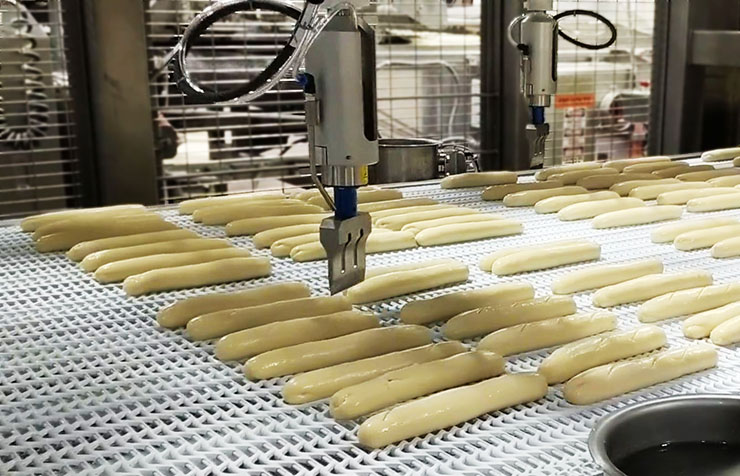
Making the cut
Automated scoring systems consistently execute cuts, using conventional cutting, ultrasonic cutting, or waterjet technology.
Automated scoring systems consistently execute cuts, using conventional cutting, ultrasonic cutting, or waterjet technology.
On-the-go or in home offices, nothing seems to be able to slow snacking down. Snacks are also increasingly the preferred option over regular mealtimes. Together with the hunger to snack, however, the demand for more diverse, healthier and tastier products also grows. Flexible technology is needed for the task.
From viennoiserie to Danish pastry, and any number of hybrid, new creations, laminated dough is the path to the sought-after airy, light layers.
Precision and consistency are required to turn blocks of dough into thin, delicate sheets. The big challenge lies in the correct distribution of the dough reduction steps while avoiding any unwanted tension in the dough. Inconsistencies in the reduction steps will significantly impact the structure of the final product.
Notable examples we looked into include Koenig’s new generation of roll lines – the KGV Plus, and the latest addition, KGV EC that was just launched at iba.CONNECTING EXPERTS mid-March.
Replicating traditional methods of preparing buns, bagels and rolls on an industrial scale is a task with an extensive list of challenges, to achieve high-volume, consistent results. Flexibility and innovation joined in dedicated production lines help provide the answers for endless product variations.
Scoring is a process that requires skill and shows the baker’s experience when done manually. Alternatively, as labor is becoming harder to find (and then keep), robots can efficiently take over the task; they will never need to stop and will perform constantly over time.
Conveyor systems work under demanding conditions in bakeries. Maintaining them in top condition is the first step to efficiency in production.
Different types of products made with laminated dough have their own process requirements to achieve the desired characteristics. Flexible equipment is needed.
The semi-automated production of Polsehorn on a large scale – that was the task with which a Danish company approached the bakery machine manufacturer FRITSCH.
RONDO observes special donut shapes are increasingly in demand, and so is the flexibility to produce them all on one line, which also makes fast changeovers a necessity.
The bakery plant manufacturer FRITSCH has redesigned the LAMINATOR 300. The sheeting line is even more flexible and gentle in dough treatment.

